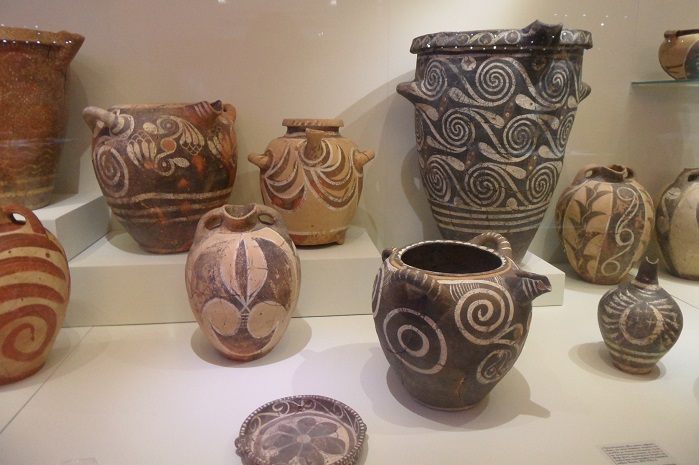
We continue our tour of the fabulous Museum of Archaeology with a focus on architecture, pottery development, and other arts.
NOTE: Of course, Thor and I had to make another trip to Greece, as he’s fallen as much in love with the islands as I am. This time, in addition to other island-hopping, I wanted to return to Crete after 37 years. My first months-long trip was as a hippie backpacker, camping in the ruins and falling under the spell of the mysterious, vanished Minoan culture. This time, I got to introduce Thor to “glorious Kriti” and research more settings for my novel-in-progress, THE ARIADNE DISCONNECT. This new blog series started October 19, 2019, and will continue every Saturday.
Going through the many photos Thor and I took of the museum exhibits, I’m finding it a real challenge to select the most striking or representative while following some semblance of chronology. So I’m separating some of the many threads — from Ariadne’s strand guiding us through the labyrinth — to clarify topics for each blog post. I’m roughly categorizing, though of course there are overlaps, and in upcoming posts I will cover the famous frescoes decorating walls of the Minoan palace complexes, then religious and burial practices. Again, a caveat: I am not a historian, just a traveler, reader, and enthusiast of Greek culture.
In previous posts, Thor and I visited the sites of palace-complexes at Phaestos and Knossos. Sir Arthur Evans in the early 1900s excavated and partially restored the complex at Knossos, and his interpretations (though controversial) allow the visitor to walk through and experience them in three dimensions.
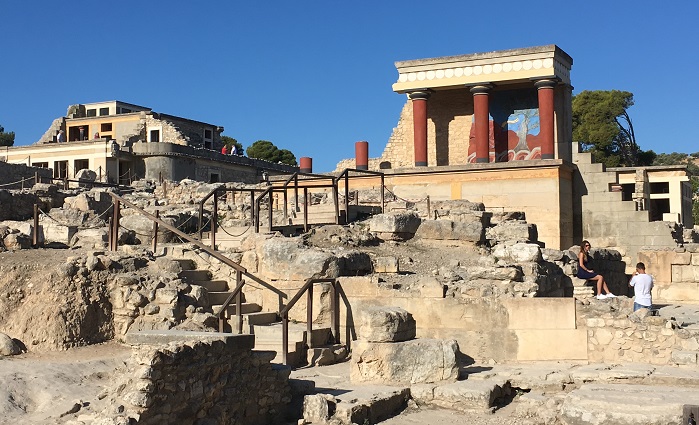
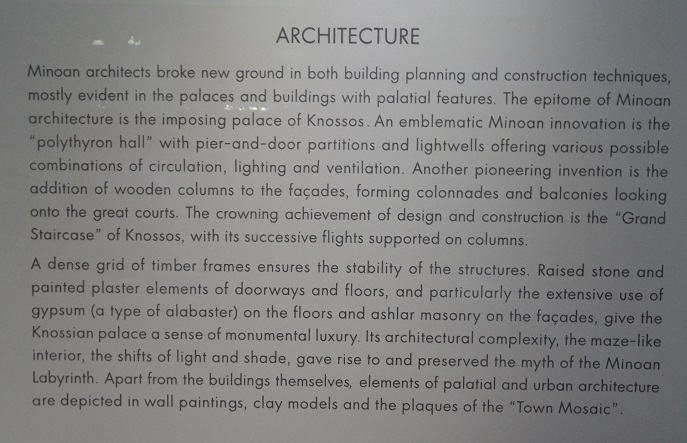
Evans consulted artifacts excavated at the Knossos site (a second complex that was built over what remained of an earlier, simpler palace before a disastrous earthquake around 1700 BC) in order to understand the architecture:
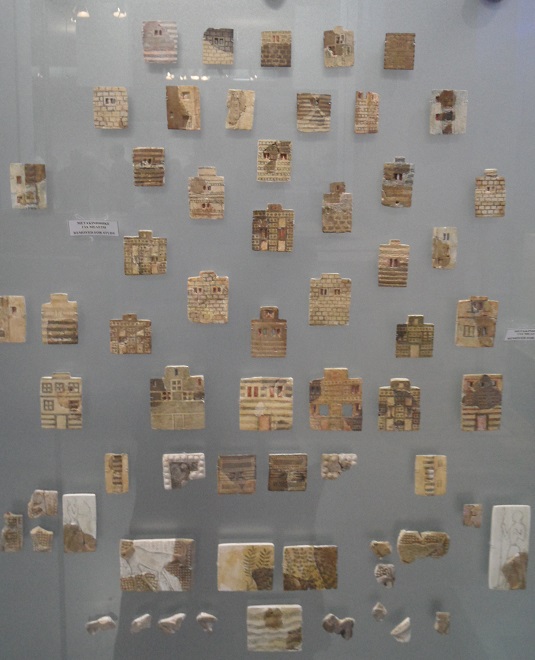
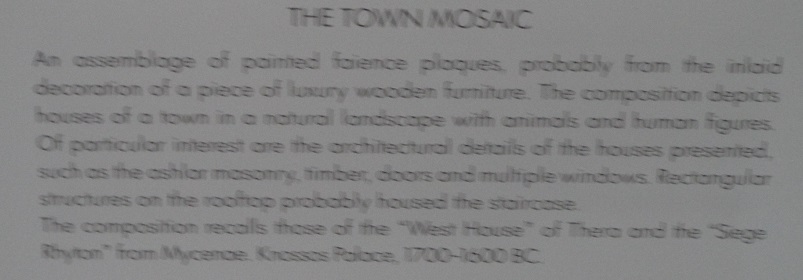
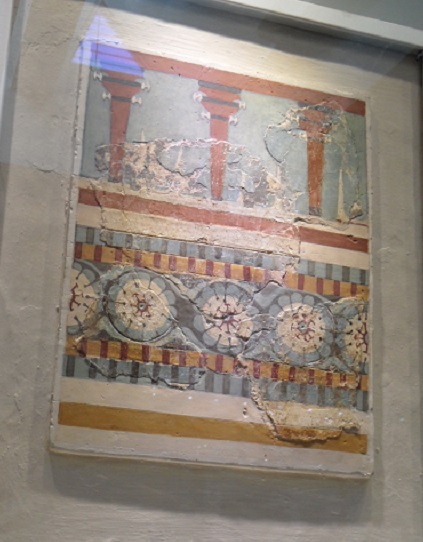

From these and many more clues, Evans mapped out his version of this second palace complex, which in its turn was damaged by another earthquake (related to the disastrous Thera/Santorini volcanic eruption around 1500 BC). The final destruction of the palace came at the hands of Dorian invaders from mainland Greece. They overwhelmed the Mycenaeans who had conquered the weakened Minoans around 1450 BC and had taken over Knossos. See what I mean about the labyrinthine threads of history?
From accumulated archaeology and history, the museum displays a model of the second Knossos palace complex, which was celebrated in its time as a marvel of beauty and grace. The mazelike structure with its large central courtyard that may have hosted the ritual bull-leaping gave rise to its identification with the Minotaur’s labyrinth of myth:
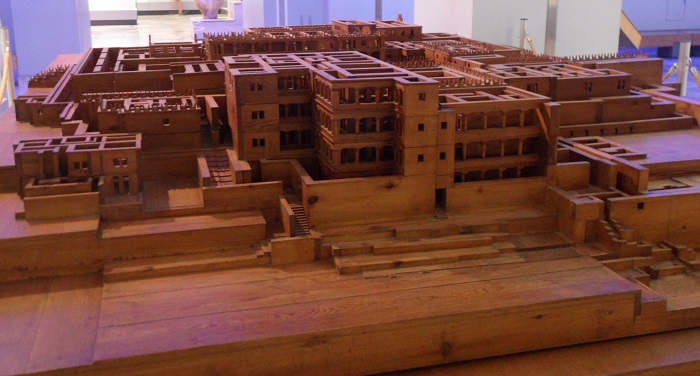
The Minoans seemed fond of making clay models of houses and shrines, and the model houses also provide clues to the general architecture, as well as daily life.
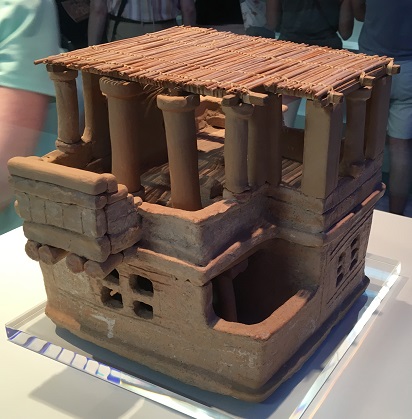
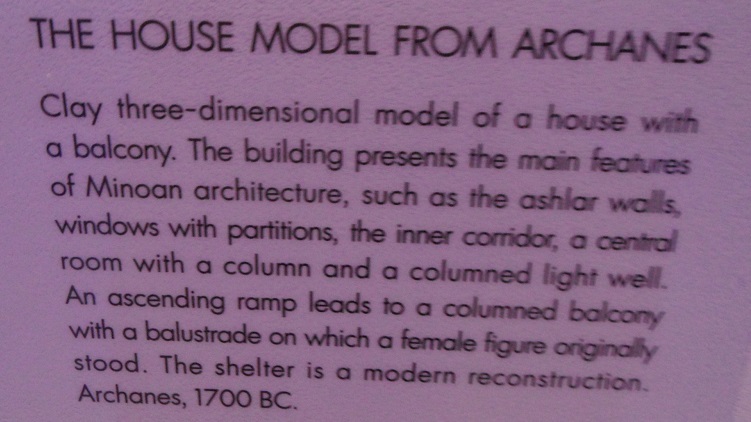
Arthur Cotterell, in the accessible historical overview THE MINOAN WORLD, offers a simple version of historical periods on Crete: Neolithic 6000-2600 BC, Pre-Palatial 2600-2000 BC, featured in last week’s post. Then we have First-Palatial 2000-1700 BC, Second-Palatial 1700-1400 BC, and Post-Palatial 1400-1100 BC. He traces one thread of evolution in the art of pottery, which became a big export item in the palatial periods. By any standards, much of the pottery is striking, and I would love to find good reproductions, if anyone knows a reliable source!
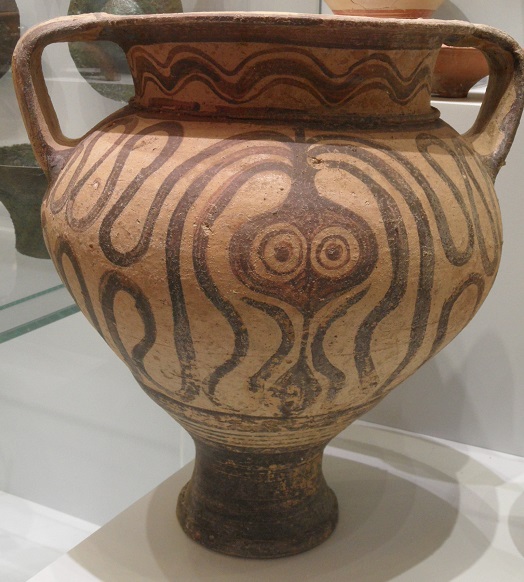
I adore the ubiquitous Greek octopus pots and vases, but I think Thor finally would have hit his heroic limit if I’d tried to bring one home in our luggage!
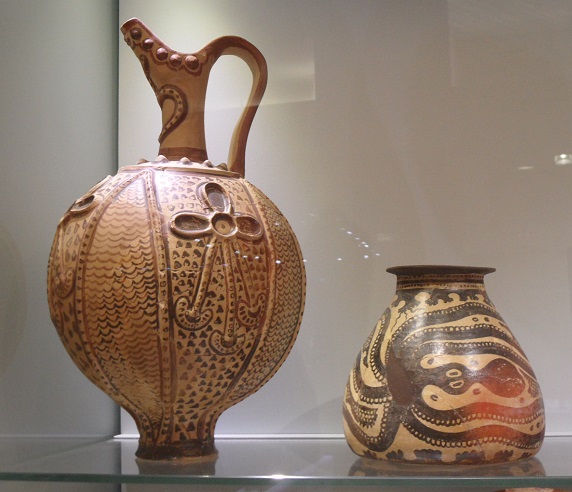
The most famous of the Minoan pottery styles was the Kamares Ware, named for a cave above Knossos where many examples were found.
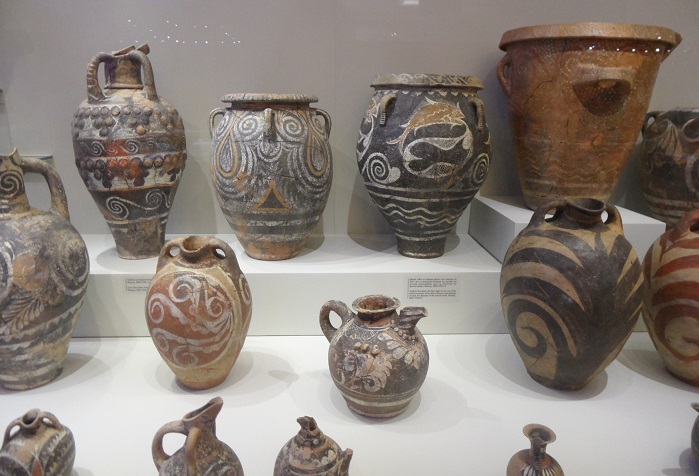

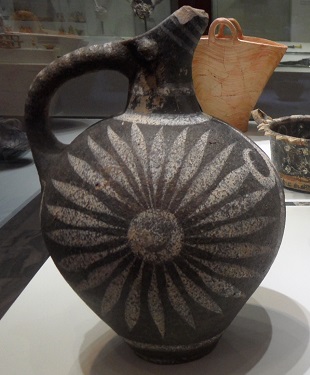
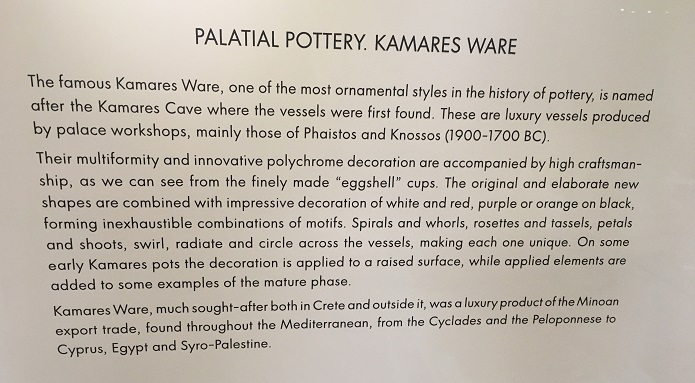



Personally, I find the “royal” ware too gaudy, but the styles were evolving by the later palatial periods. Next came pottery featuring lifelike marine images:
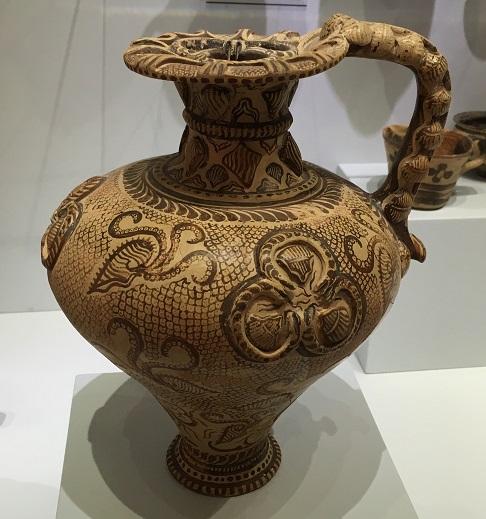

Minoan history is pieced together largely from excavations and later Greek myths and stories, since their different hieroglyphic and linear scripts remain largely undeciphered. It appears from available evidence that they were a mostly peaceful, nature-loving culture, who dominated sea trade in the Mediterranean during their heyday, but had little military presence. There were distinct classes of aristocrats, merchants, and peasant workers, but few slaves. The upper classes enjoyed luxurious art, jewelry, and games. This gaming draught-board is one example of the luxuries:
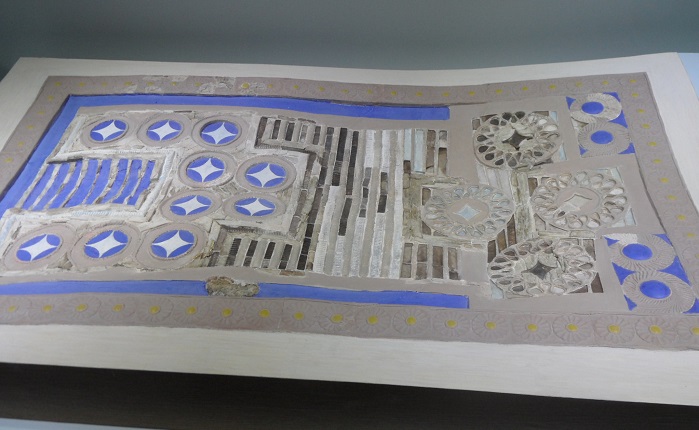

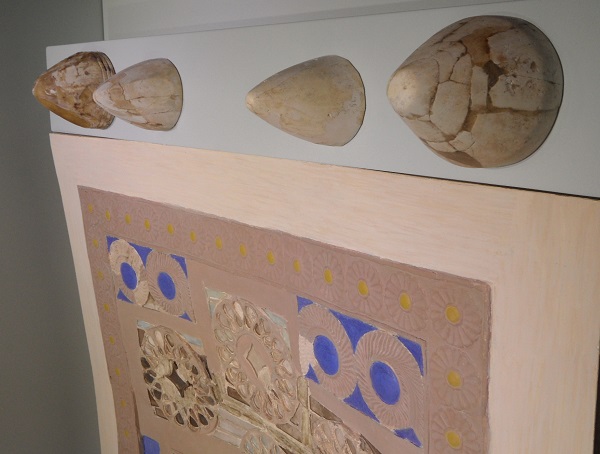
As we’ll see next week in the palace frescoes, the wealthier women wore flounced skirts, tight bodices that revealed the breasts, fancy jewelry, and elaborate hairstyles.
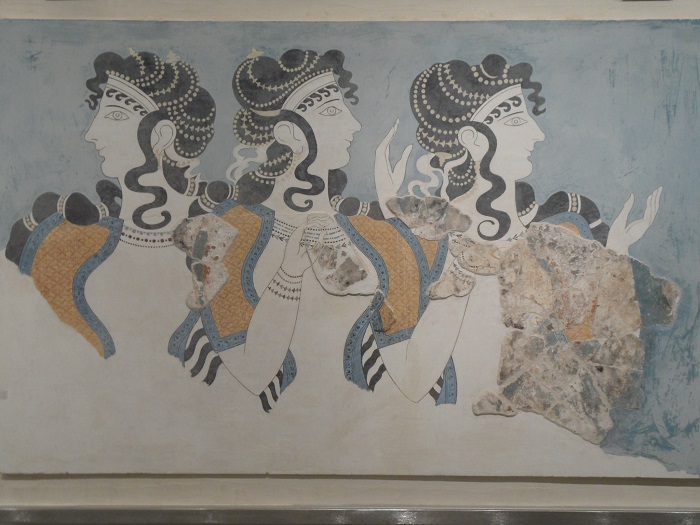

The jewelry from the end of the palatial period had evolved considerably in craftsmanship from the early examples shown in last week’s post:
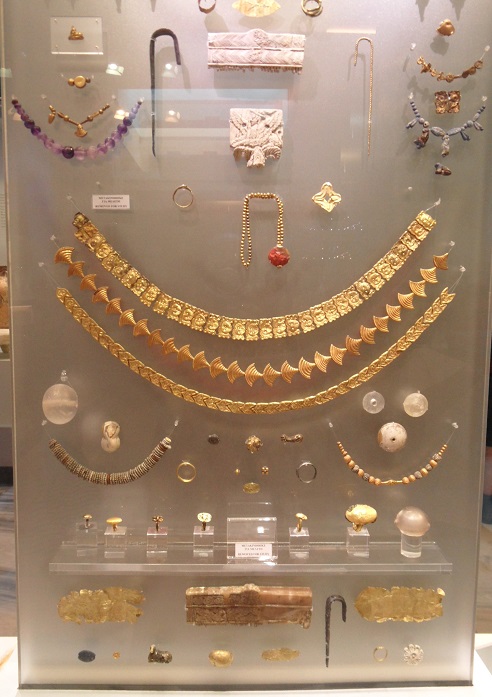

Seal stones and rings were common, and were a clue leading Evans to excavate in Crete. He had spotted one of the carved stones in an antique shop in Athens, and discovered that it was found on Crete. Apparently the local women often found and kept them as talismanic “milk stones.” The practice appears in my novel THE ARIADNE CONNECTION.
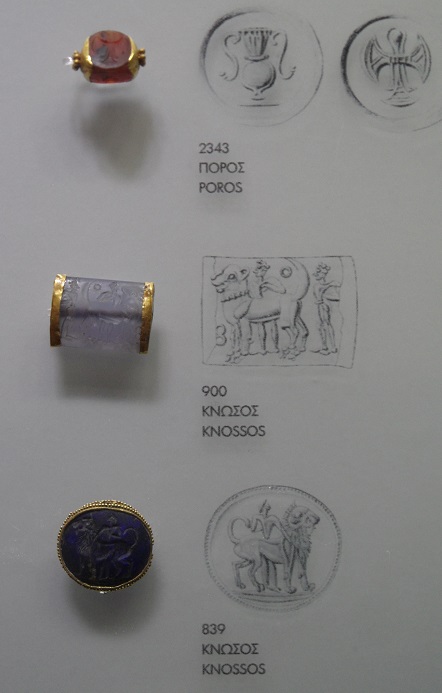
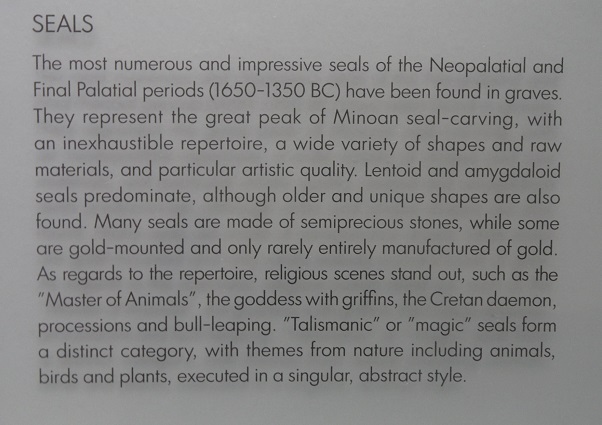
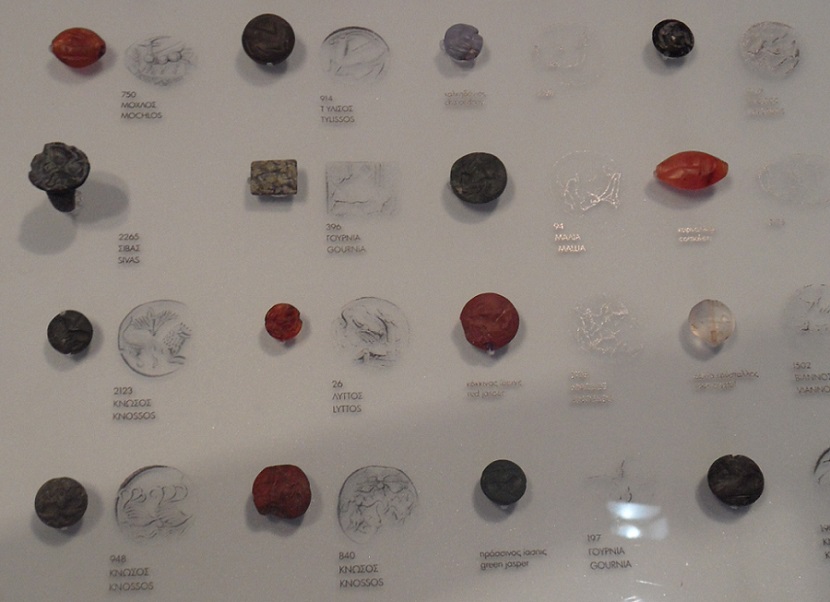
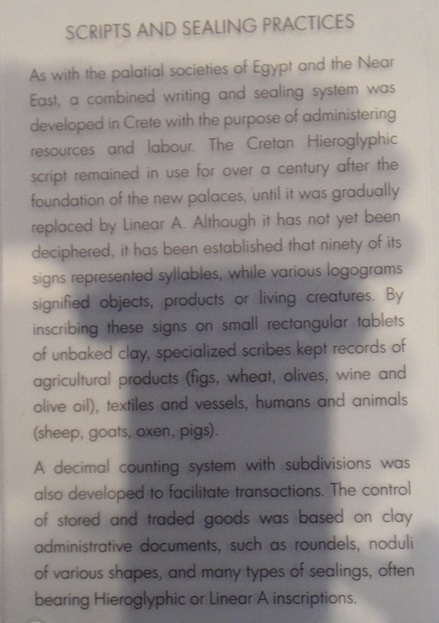
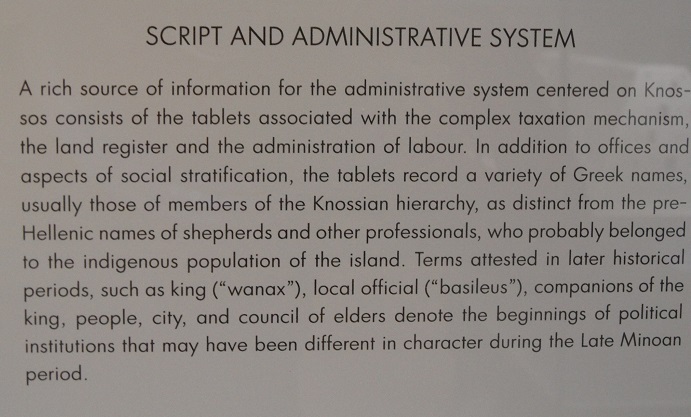
And, of course, the famous Phaestos Disc remains a mystery:
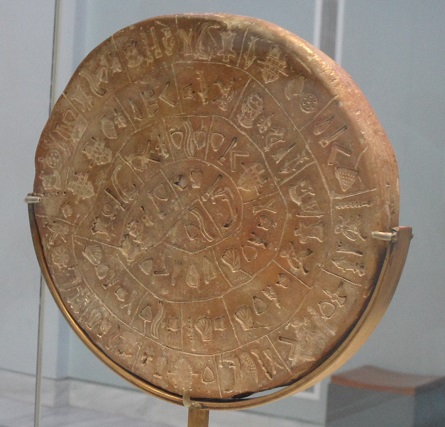
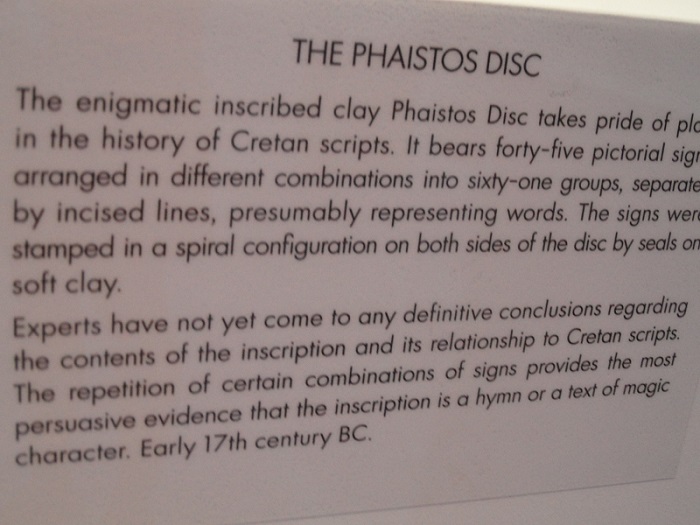
In the height of the palatial periods, arts and crafts continued to flourish:
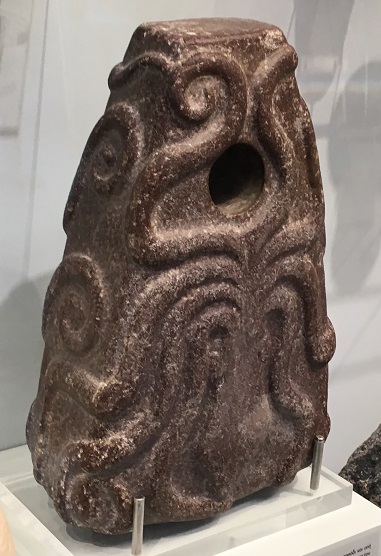


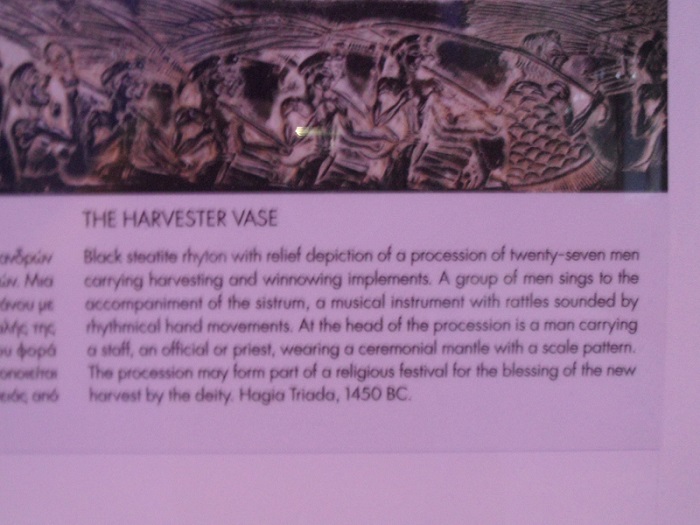
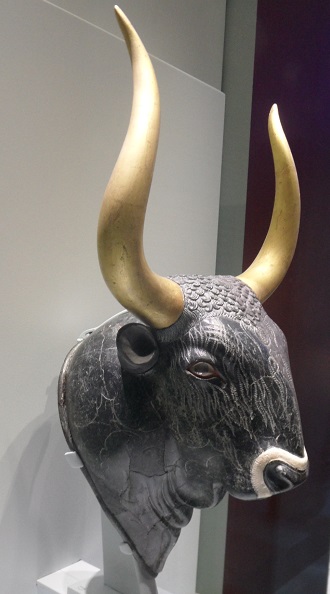

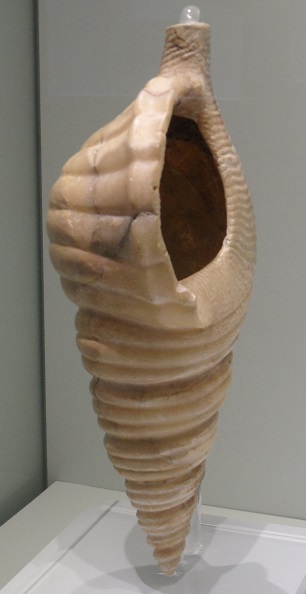

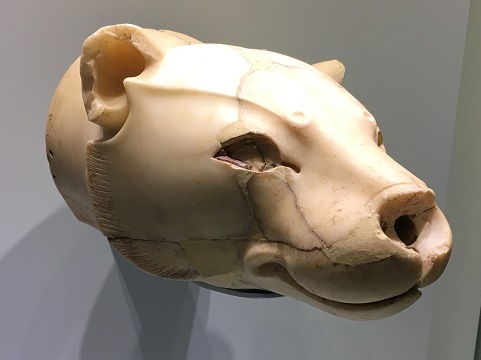
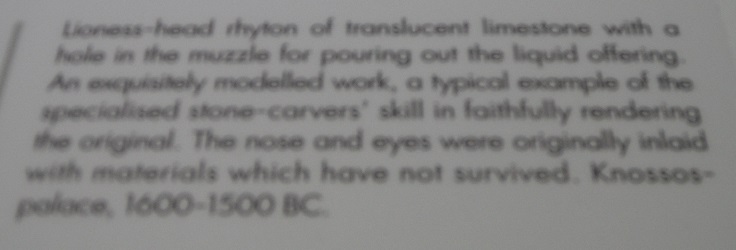
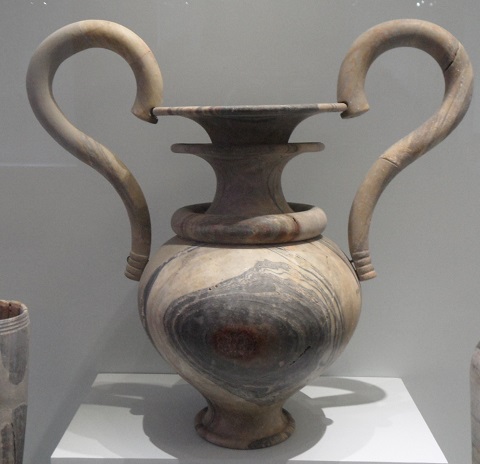
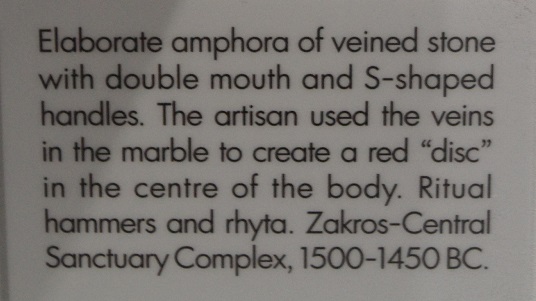
Time for a break and a toast to the ancient Minoans, perhaps some wine poured from one of those fabulous rhytons. “Chairete!” Join us next week for frescoes!

*****
You will find The Rambling Writer’s blog posts here every Saturday. Sara’s latest novel from Book View Cafe is available in print and ebook: The Ariadne Connection. It’s a near-future thriller set in the Greek islands. “Technology triggers a deadly new plague. Can a healer find the cure?” The novel has received the Chanticleer Global Thriller Grand Prize and the Cygnus Award for Speculative Fiction. Sara has recently returned from another research trip in Greece and is back at work on the sequel, The Ariadne Disconnect. Sign up for her quarterly email newsletter at www.sarastamey.com

1 thought on “The Rambling Writer Returns to Crete, part 17: Iraklion Museum, Architecture & Art”